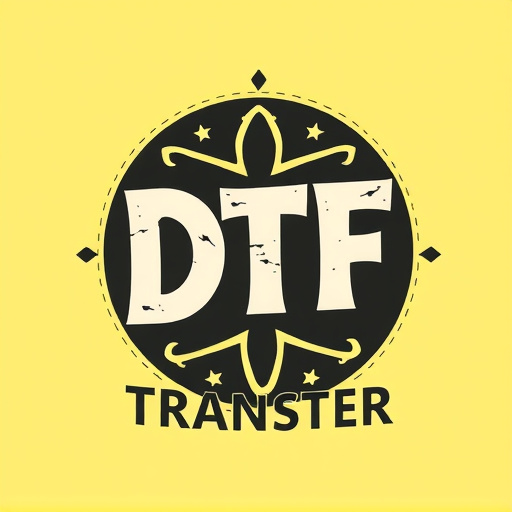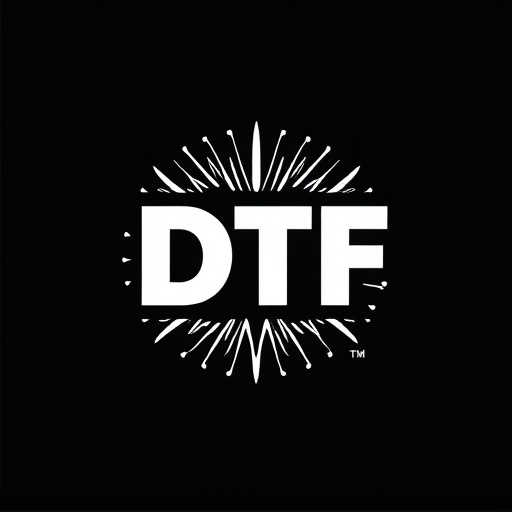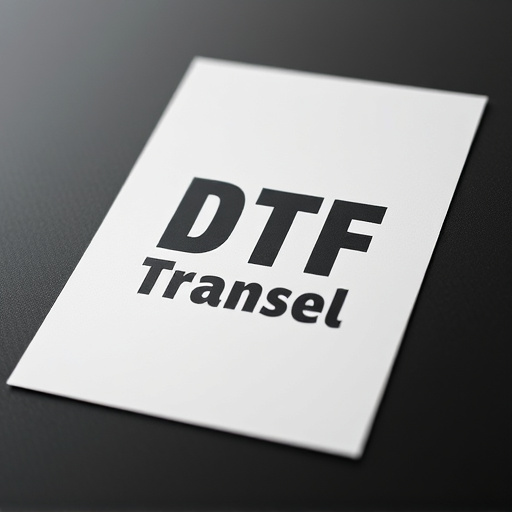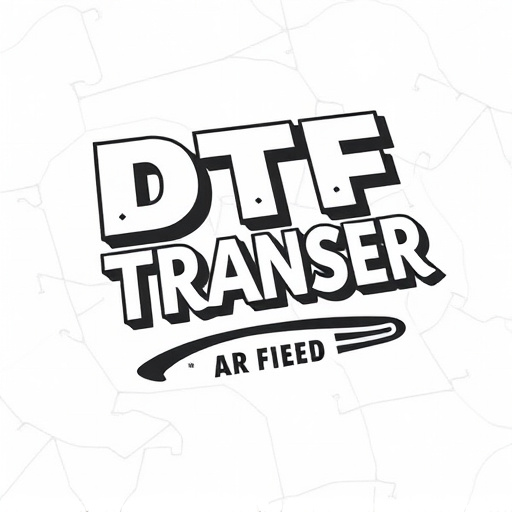Direct-to-film (DTF) printing is a revolutionary technology for commercial production, enabling high-quality image transfer onto various film surfaces with remarkable speed and precision. This method combines graphic design and film production, offering vibrant colors and intricate details in applications like branding, signage, and promotional items. By streamlining processes, reducing waste, and cutting costs, DTF printing caters to diverse commercial needs, as seen in successful case studies showcasing its durability and versatility in outdoor advertising and in-store displays. Choosing the right materials, techniques, and equipment is crucial for achieving outstanding results that meet aesthetic and longevity standards.
“Discover the art of DTF Printing (Direct-to-Film) – a game-changing production process for commercial clients. This comprehensive guide explores the benefits and intricacies of DTF, from its ability to enhance visual impact to its efficiency in batch printing. Learn how this technique revolutionizes marketing materials, offering vibrant, durable films ready for various applications. We’ll navigate the process, material selection, and expert tips to ensure top-tier results, backed by inspiring case studies.”
- Understanding Direct-to-Film Printing: A Brief Overview
- Benefits of DTF for Commercial Projects
- The Process: From Design to Final Product
- Choosing the Right Materials and Techniques
- Expert Tips for High-Quality Film Transfers
- Case Studies: Successful DTF Production in Action
Understanding Direct-to-Film Printing: A Brief Overview
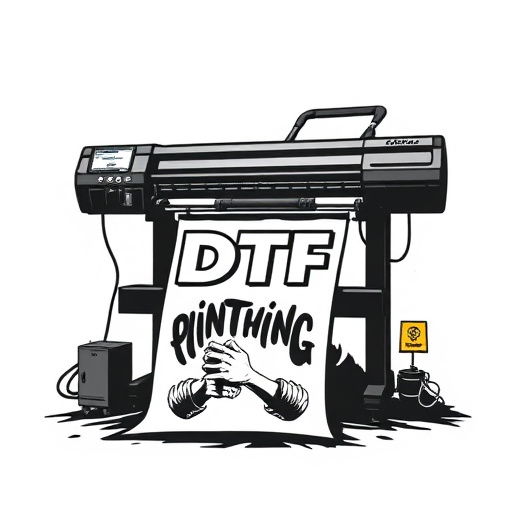
Direct-to-film (DTF) printing is a cutting-edge technology that allows for the precise transfer of high-quality images and designs directly onto various film surfaces. This innovative process has revolutionized commercial production, offering an efficient and cost-effective solution for businesses seeking impactful visual content. DTF Printing enables the creation of stunning visuals, from promotional banners to advertising displays, by seamlessly integrating graphic design with film production.
The method involves using specialized equipment to apply inks or coatings directly onto the chosen film material, ensuring exceptional clarity and durability. This direct approach eliminates intermediate steps, resulting in faster turnaround times and superior quality. With DTF Printing, commercial clients can expect vibrant colors, intricate details, and a range of possible substrates, making it an attractive option for various marketing and branding applications.
Benefits of DTF for Commercial Projects
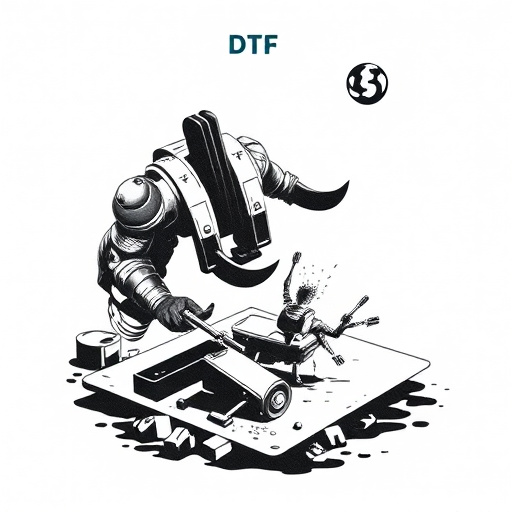
Direct-to-film (DTF) printing offers a multitude of benefits for commercial projects, setting it apart as a versatile and efficient solution. One of its key advantages is the ability to produce high-quality, full-color images directly onto various materials, including films, plastics, and metals, without the need for intermediate steps. This direct approach streamlines production processes, reduces waste, and cuts down on time and costs, making it an attractive option for businesses seeking fast turnaround times.
Moreover, DTF printing excels in delivering exceptional detail and vibrancy, ensuring that commercial visuals are eye-catching and impactful. Its precision allows for intricate designs and fine lines to be reproduced accurately, which is particularly valuable for branding materials, signage, and promotional items. This technology’s adaptability also means it can handle a wide range of project scales, from small-batch custom products to large-format advertising displays, catering to diverse commercial needs with consistent excellence.
The Process: From Design to Final Product
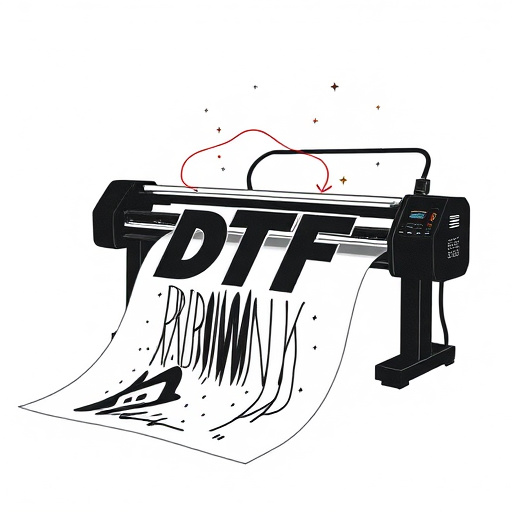
The process of direct-to-film (DTF) transfer production for commercial clients involves a meticulous journey from design conception to the final printed product. It all begins with the client providing their artwork or design specifications, which are then carefully evaluated by the expert team. This initial phase is crucial as it ensures the design’s viability for DTF printing. The designers and technicians work hand-in-hand to optimize the image, ensuring color accuracy, resolution, and overall quality.
Once approved, the design is prepared for printing. This includes setting up the film, calibrating the machines, and selecting the appropriate materials. The actual transfer process involves precisely applying the design onto the desired surface using specialized equipment. Post-printing, quality control checks are conducted to verify the accuracy of the reproduction. Any necessary adjustments are made before the final product is packaged and delivered to the client, ensuring a seamless experience from concept to completion.
Choosing the Right Materials and Techniques
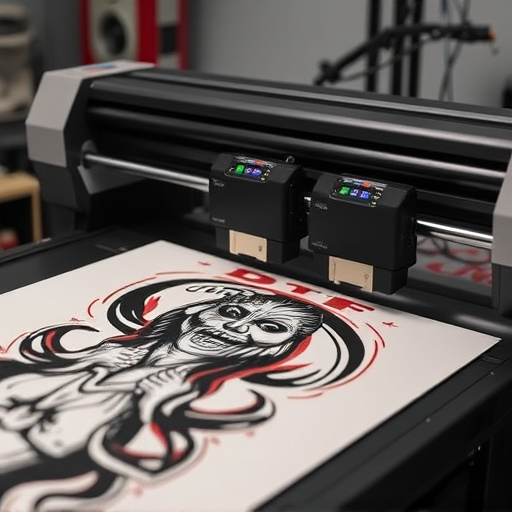
When it comes to direct-to-film (DTF) transfer production, selecting the right materials and techniques is paramount for achieving exceptional results. Commercial clients should look for high-quality printing inks that are durable and suitable for outdoor exposure, ensuring their messages remain vibrant and legible over time. The choice of substrate is also critical; options include vinyl, canvas, or specialized DTF films designed for specific applications, each offering unique advantages in terms of flexibility, water resistance, and UV protection.
Techniques employed in DTF printing should be evaluated based on the project’s requirements. Advanced machines capable of fine detail reproduction and precise color accuracy are essential for complex designs. Moreover, professionals should consider the use of laminates to shield the print from environmental factors, extending its lifespan. By combining top-tier materials with sophisticated techniques, commercial clients can ensure their final products meet high standards of aesthetics and longevity.
Expert Tips for High-Quality Film Transfers
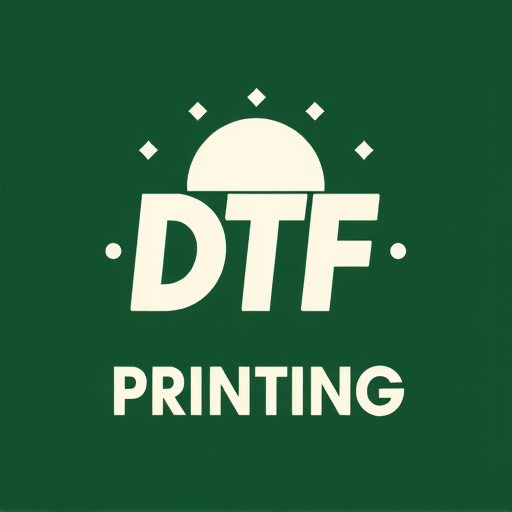
When it comes to direct-to-film transfer production, expertise is key to achieving high-quality results. For commercial clients looking to print or reproduce films accurately, understanding the process and employing best practices is essential. One expert tip is to utilize specialized equipment designed for DTF printing, ensuring precise color reproduction and sharp details. Calibrated machines with adjustable settings allow for fine-tuning the transfer process according to the specific film material and desired outcome.
Additionally, the preparation of the original film is critical. Cleaning and repairing the film before transfer can significantly impact the final print quality. Removing dust, debris, and defects from the surface ensures a clearer image transfer. Repairing torn or damaged areas with appropriate techniques extends the lifespan of vintage films and guarantees a more accurate reproduction for modern printing applications.
Case Studies: Successful DTF Production in Action
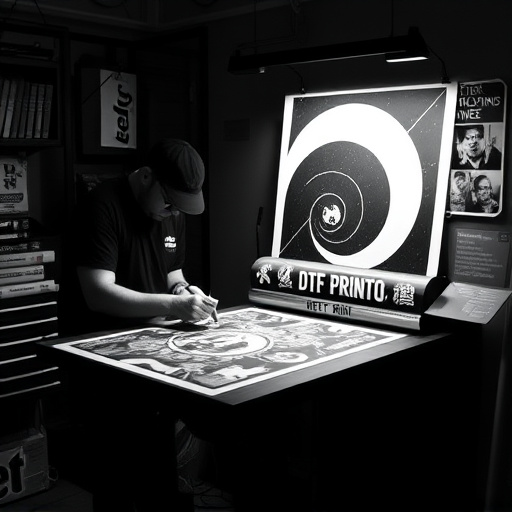
Direct-to-film (DTF) production has proven its worth in numerous successful case studies for commercial clients. These real-world applications showcase the versatility and high-quality results that DTF Printing can deliver. For instance, a leading marketing agency recently utilized DTF to create captivating, large-scale outdoor advertisements. By printing directly onto rigid polycarbonate film, they produced eye-catching displays that withstood harsh weather conditions, ensuring a prolonged impact on passersby.
Another notable example involves a retail brand that adopted DTF for in-store promotional materials. The company’s creative team designed vibrant, personalized posters and displays using DTF Printing, allowing for high-resolution images and rich color accuracy. This approach not only enhanced the overall shopping experience but also facilitated quick changes to marketing campaigns based on consumer feedback, demonstrating the agility and efficiency of direct-to-film production methods.









